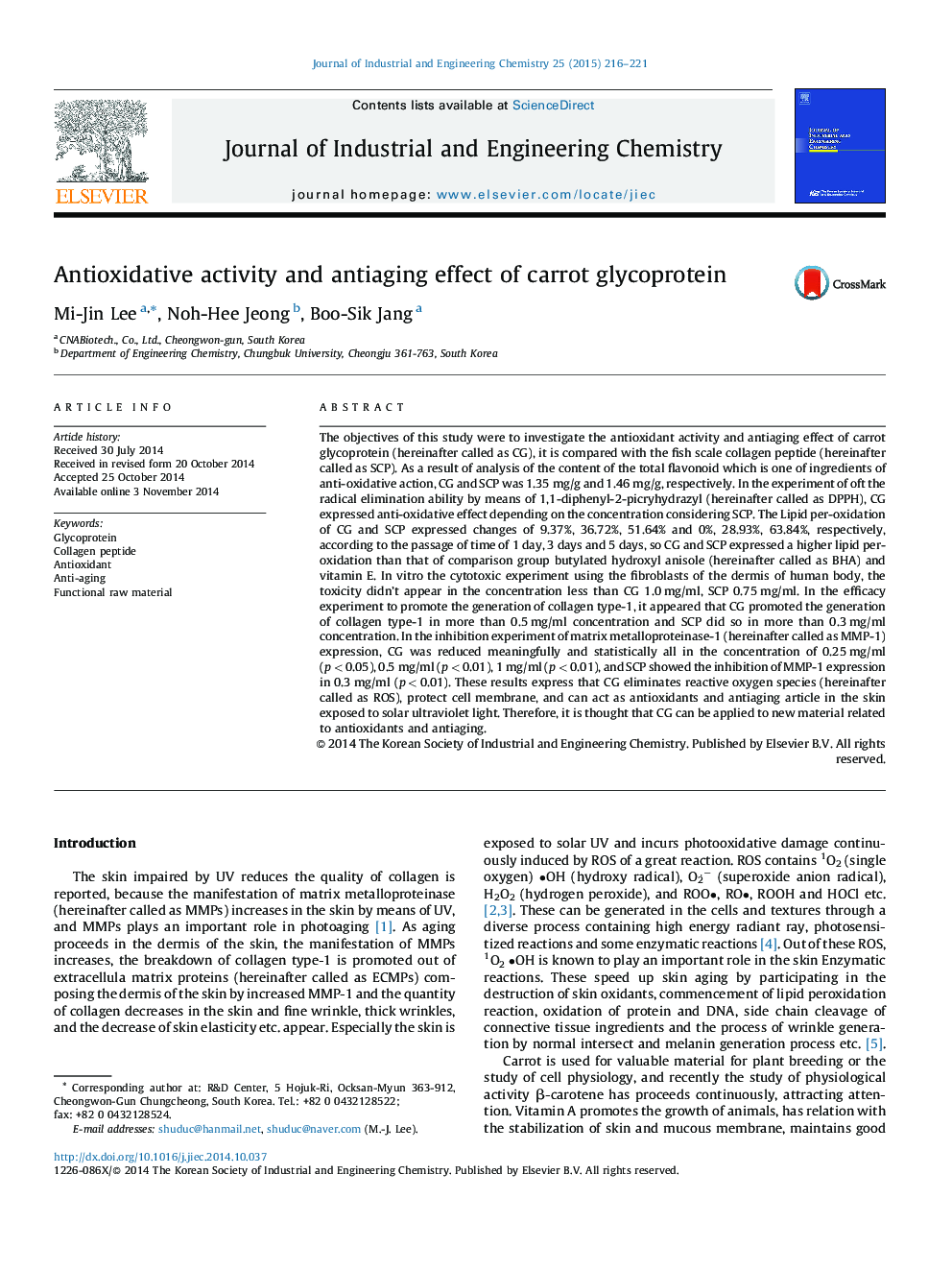| Article ID | Journal | Published Year | Pages | File Type |
|---|---|---|---|---|
| 227111 | Journal of Industrial and Engineering Chemistry | 2015 | 6 Pages |
The objectives of this study were to investigate the antioxidant activity and antiaging effect of carrot glycoprotein (hereinafter called as CG), it is compared with the fish scale collagen peptide (hereinafter called as SCP). As a result of analysis of the content of the total flavonoid which is one of ingredients of anti-oxidative action, CG and SCP was 1.35 mg/g and 1.46 mg/g, respectively. In the experiment of oft the radical elimination ability by means of 1,1-diphenyl-2-picryhydrazyl (hereinafter called as DPPH), CG expressed anti-oxidative effect depending on the concentration considering SCP. The Lipid per-oxidation of CG and SCP expressed changes of 9.37%, 36.72%, 51.64% and 0%, 28.93%, 63.84%, respectively, according to the passage of time of 1 day, 3 days and 5 days, so CG and SCP expressed a higher lipid per-oxidation than that of comparison group butylated hydroxyl anisole (hereinafter called as BHA) and vitamin E. In vitro the cytotoxic experiment using the fibroblasts of the dermis of human body, the toxicity didn’t appear in the concentration less than CG 1.0 mg/ml, SCP 0.75 mg/ml. In the efficacy experiment to promote the generation of collagen type-1, it appeared that CG promoted the generation of collagen type-1 in more than 0.5 mg/ml concentration and SCP did so in more than 0.3 mg/ml concentration. In the inhibition experiment of matrix metalloproteinase-1 (hereinafter called as MMP-1) expression, CG was reduced meaningfully and statistically all in the concentration of 0.25 mg/ml (p < 0.05), 0.5 mg/ml (p < 0.01), 1 mg/ml (p < 0.01), and SCP showed the inhibition of MMP-1 expression in 0.3 mg/ml (p < 0.01). These results express that CG eliminates reactive oxygen species (hereinafter called as ROS), protect cell membrane, and can act as antioxidants and antiaging article in the skin exposed to solar ultraviolet light. Therefore, it is thought that CG can be applied to new material related to antioxidants and antiaging.
